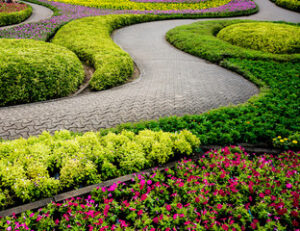Septic tanks are the final destination for all home and business wastewater. Solid waste materials in septic tanks overflow into the leach field, clog drain lines, and decrease soil porosity. Regular inspections and pumping minimize this risk. Click the Septic Tank Services Near Me to learn more.
To keep your septic system in great shape, practice water conservation. This includes fixing leaks promptly, using appliances efficiently, and spreading out household water usage throughout the day.

The installation of a septic tank is a complex job and should only be left to professionals. Professionals can ensure that the tank is placed accurately and according to local health regulations. They will also be able to provide advice on how to best manage your septic system. For example, they will help you determine the correct size of tank for your household, taking into consideration factors such as water usage and soil type.
A septic tank system is designed to treat wastewater and protect groundwater supplies. The effluent from your home enters the tank through a series of pipes that lead to an absorption field, which is an area of gravel trenches underground. The wastewater is filtered into the soil and absorbed by the grass above it. The system can prevent water and waste from draining into public water supply watersheds, where they can cause contamination of drinking water.
If you have a septic system, you should keep it well-maintained to avoid clogs and other problems. It is a good idea to use septic-safe cleaning products, which are less likely to damage the tank or the plumbing system. You should also install water-conserving fixtures in your home, such as faucets, showerheads and toilets, and make sure to repair dripping or leaking toilets and faucets immediately. You should also divert roof and driveway rainwater away from the septic system to prevent it from becoming overloaded with water.
A septic system is an excellent choice for homeowners looking to reduce their water bills and save on sewage expenses. It is important to hire a professional septic service company to install the system, as they will have the expertise and equipment needed to do a quality job. In addition, they will be able to advise you on the right size of septic tank for your home and ensure that the tank is properly buried in the ground. In addition, they will be able handle hazardous materials safely and correctly, which is important for a project such as this. This will help to reduce the risk of accidents and injuries and to save you time and money in the long run.
Inspection
Before a home buyer closes on a house with a septic system, the septic tank needs to be inspected. This allows the inspector to identify any potential problems and get them repaired before the home is sold, preventing expensive repairs later. It also helps to avoid costly environmental damage and health issues.
A full septic tank inspection includes an examination of the septic system and its components, a review of the homeowner’s maintenance records, and a discussion of the home’s water usage. The inspector checks the inlet and outlet baffles to ensure they are firmly attached, properly positioned, and functioning correctly. The inlet baffle slows wastewater entry into the septic tank to allow solids to settle and separate, while the outlet baffle prevents sludge from flowing out of the tank.
The inspector determines the liquid level of the septic tank and checks the tank for leakage, corrosion, and other problems. The liquid level should be several inches below the top of the baffles. The inspector also tests for sludge level, which should be below the inlet baffle but above the outlet baffle. If the sludge level is too high, it may be time to have the septic tank pumped.
Finally, the inspector checks for signs of a functioning leach field. He or she checks the surface for puddles that indicate a working system, probes the area of the leach field to look for signs of effluent saturation, and uses dye if necessary to find areas where a system might have a leak.
A septic inspector should also check the septic system vents for obstructions. These are located at both ends of the leach line, and clogged vents can cause odors in the home. The inspector should also note any wet spots in the yard and identify the location of the septic tank and the location of other system components. This can help homeowners maintain the system more effectively by ensuring they don’t park vehicles or drive equipment over the absorption field and septic tank. They can also keep plants and shrubs, especially those with deep roots, away from the absorption field to prevent them from invading the pipes and clogging them.
Pumping
The function of septic tanks is to remove solid waste from household wastewater so the remaining liquid, known as effluent, can be absorbed into soil for treatment. Septic tank pumping is an important part of septic system maintenance, and homeowners should understand when their tank needs to be pumped and why.
Typically, the amount of solids in a septic tank determines when it is time to have it pumped. If the septic tank is pumped on a regular basis, it can extend its lifespan and prevent costly repairs.
If a septic tank is not pumped regularly, it can overflow into the drain field, which can cause backups and water damage in the home. It also can lead to the system failing, which can be expensive to repair or replace.
A septic tank is designed with baffles that keep the sludge and scum layer from reaching the liquid effluent level in the tank. During a septic tank pumping, the contractor will use a high-powered vacuum, similar to a truck vac, to remove the sludge and scum from the septic tank. This process will be easier the sooner it is done, because the sludge and scum become thicker over time.
Homeowners can help the septic tank pumping process go more smoothly by making sure there are no obstructions in the yard around the tank and the drainage field. This will include removing large items like play equipment and storage sheds, clearing away any plants, shrubs, or trees that are growing too close to the drainage field, and locating the tank. In addition, homeowners should use efficient water-saving toilets and appliances, limit their shower usage, and limit the amount of food scraps and oil that is thrown into the garbage disposal.
The best way to determine if a septic tank is full is to locate it, dig up the back concrete or green plastic lid, and open it. A septic tank professional will then use a special measuring stick with a velcro strip, which is placed horizontally on the surface of the septic tank. The sludge will cling to the velcro, which allows you to see how many inches of sludge are in the tank. Ideally, a septic tank should be pumped when the sludge layer reaches the bottom of the tank.
Cleaning
A septic tank is a large underground container that holds all the waste that comes from your home. When wastewater flows into it, solids sink to the bottom and undergo bacterial digestion. This process changes them into sludge. Water and other liquids float to the top and exit the tank into the drain field, where they soak into the ground and continue to undergo natural treatment processes. The septic tank should be cleaned regularly to remove the sludge and keep the wastewater flowing as it should.
A septic system that isn’t properly cleaned could lead to clogged pipes and health problems for your family. A septic tank can also be a fire hazard. Investing in preventative maintenance and regular cleanings can save you money down the road and ensure that your septic system is functioning as it should.
If you’re unsure whether or not your septic tank needs to be cleaned, consider the following signs. If your toilets are taking a long time to drain, it could be an indication that the tank is overflowing with sludge. Similarly, if your drains are gurgling or bubbling, it could indicate that the septic tank is full of hydrogen sulfide and methane gases. This is dangerous for your health and can cause a variety of symptoms.
The septic tank cleaning process starts with the specialist tracking down the location of the septic tank. They’ll use a map that comes with the inspection documents and track the plumbing lines in your home to locate it. Once they’ve found it, they’ll open the access lid and start pumping the tank.
Once the septic tank is pumped, the professional will inspect the contents of the septic tank to see if it’s ready for the next step:
Most tanks have two compartments that are separated by a dividing wall. During a cleaning, the technician will insert a large hose into each of the tanks and suction out the sludge. They’ll then stir the tank to mix up the contents and make it easier to dispose of. They’ll take the sludge to an out-of-the-way location for disposal.



